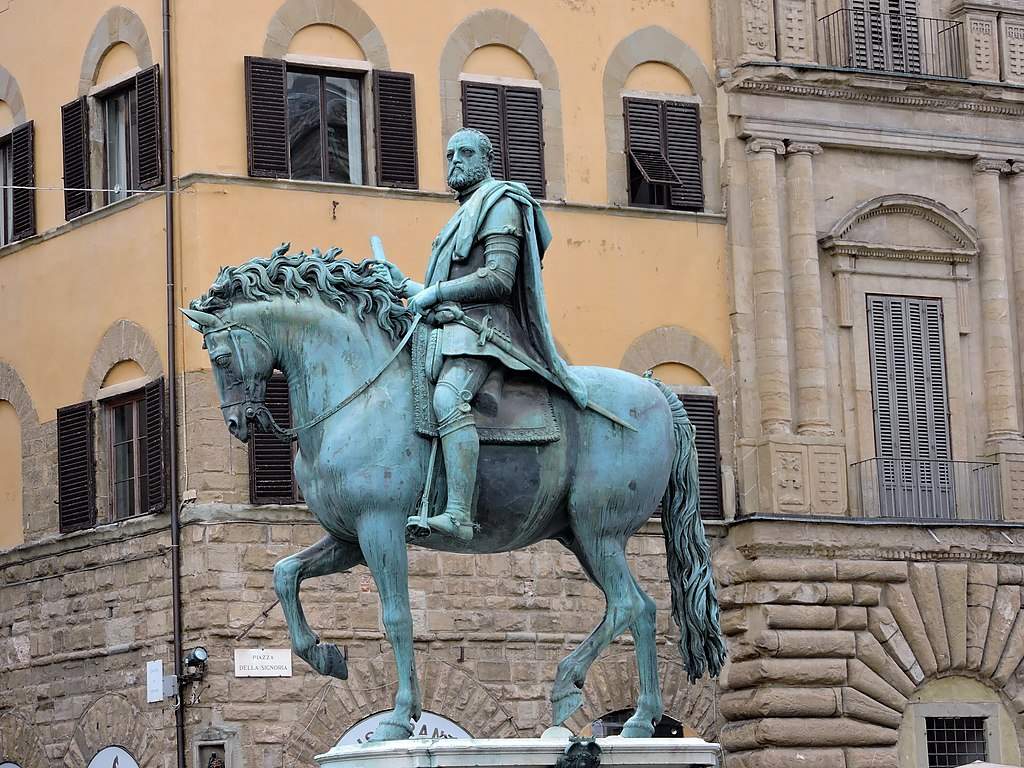Restoration work on the sculptural groups in Florence ’s Piazza della Signoria that began in 2020 continues. Non-invasive investigations using X-ray technology are currently underway on the equestrian statue of Cosimo I, a masterpiece by Giambologna (Jean de Boulogne; Douai, 1529 - Florence, 1608), in order to monitor its “state of health.” The analyses are being carried out under the direction of the Fine Arts Service of the Municipality’s Technical Services Department, by the specialized laboratory Thierry Radelet and with the logistical support of Cooperativa Archeologia (the company that will carry out the restoration). Objective, to determine the state of conservation of the metal structures inside the legs of the horse on which the monument rests. Deputy Mayor Alessia Bettini, who is in charge of culture, and Public Works Councillor Titta Meucci conducted a site inspection.
With the start of the construction site for the Giambologna monument, the offices conducted cognitive and diagnostic investigations to identify the most appropriate methods of intervention for the specific case, since it is a bronze statue of the 16th century, of great value and located outdoors. Hence the decision of the offices to proceed with the execution of digital X-ray investigations, the most accurate to understand the condition of the metal inside the bronze in a monument of this kind, addressed to the two legs of the horse to which, through two pins placed inside, is entrusted with the task of transferring the full load of the statue on the base. The purpose of the investigations is to determine the condition of the statue’s current static condition, to monitor any changes in it over time, and to avert phenomena of degradation. The x-rays are performed according to the procedures established by the ASL, during night hours and in complete safety, preventing transit in the area surrounding the statue during the execution.
The investigations on the equestrian statue of Cosimo I are part of an intensive program of restoration of Florentine artistic works, desired and commissioned by the City of Florence, carried out and executed by Cooperativa Archeologia, which will also make use of the specific expertise of restorers Nicola Salvioli and Stefano Landi. The restoration work includes the sculptural groups in Piazza della Signoria, so also Baccio Bandinelli ’sHercules and Cacus and the copy of Michelangelo’s David placed at the entrance to Palazzo Vecchio, as well as the copy of Judith and Holofernes on the Arengario of Palazzo Vecchio. The restoration was made possible by an agreement between the City of Florence and the Florentine fashion house Salvatore Ferragamo S.p.A., which, through Art Bonus, gave a one-time liberal donation earmarked for the conservation of Italy’s artistic heritage.
“Careful operations that take into account the inestimable historical and artistic relevance of the monument and thus aim to protect it as best as possible,” stress Deputy Mayor and Councillor for Culture Alessia Bettini and Councillor for Public Works Titta Meucci. “Elaborate investigations are in the field, as such an important, ancient and large statue as that of Cosimo I by Giambologna deserves. It is very interesting to discover the secrets of these interventions, and that is why we also want to organize a kind of ’open day’ later on so that it is possible, for those who want to, to visit the construction sites, to observe these monuments from a new and interesting angle.”
 |
| Florence, investigation of Giambologna's Cosimo I monument kicks off before restoration |
Warning: the translation into English of the original Italian article was created using automatic tools. We undertake to review all articles, but we do not guarantee the total absence of inaccuracies in the translation due to the program. You can find the original by clicking on the ITA button. If you find any mistake,please contact us.